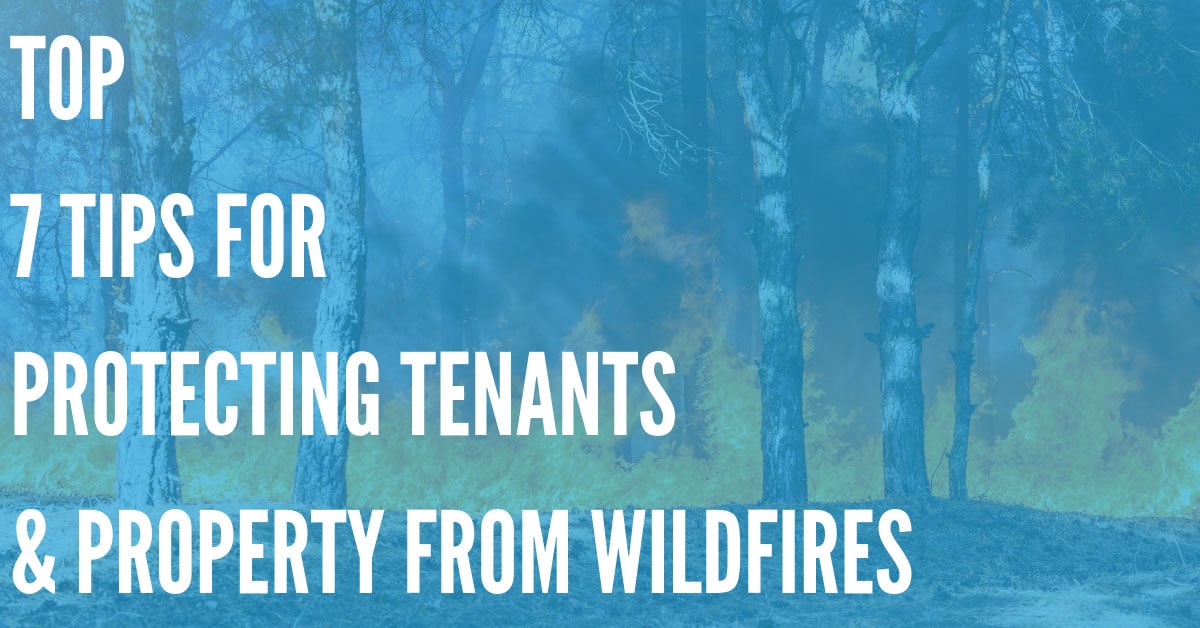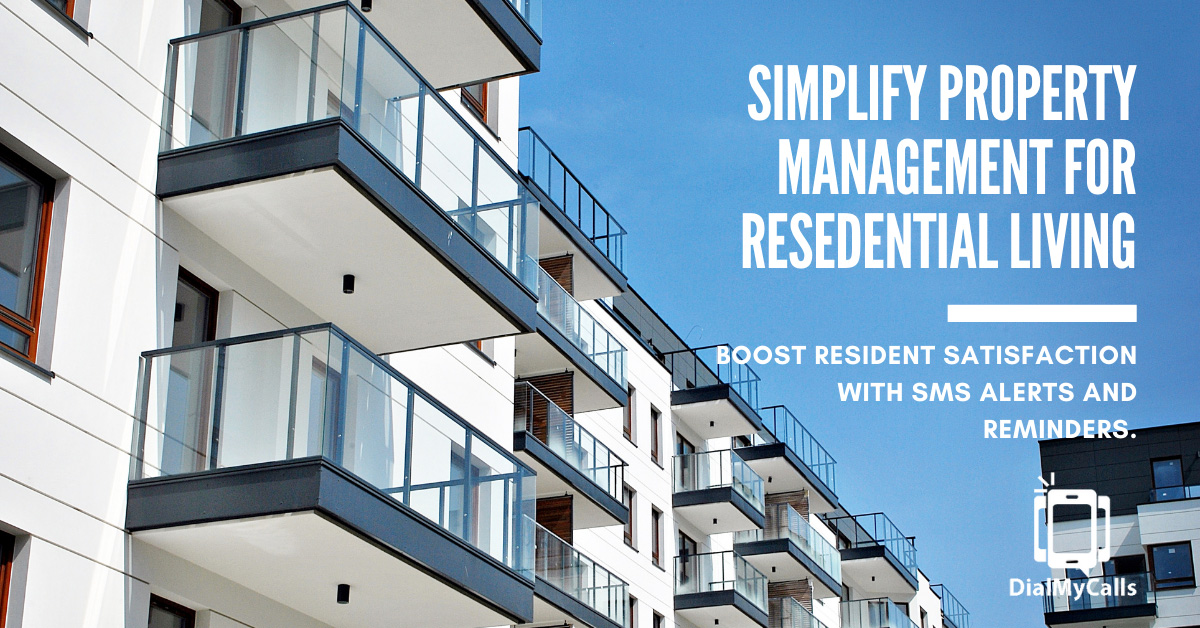Protecting Your Tenants and Properties from Wildfires – Our Guide
Posted by Tim Smith in Property Management on August 22, 2019
Updated on August 10, 2022

If you are a property owner and you rent to tenants in a state that is prone to wildfires, such as California, you may be wondering how you can protect your property and your tenants. In 2018, serious wildfires like the Camp Fire devastated California, and many other states also experienced significant wildfires.
If you live in a wildfire-prone area, you may be wondering – how can you protect your property from wildfires this year, and ensure your tenants remain safe? In this article, we’ll provide you with some great tips and steps you can take for better fire protection.
1. Keep an Eye on Your Fire Risk Throughout the Year
First things first, you should make sure that you keep an eye on weather conditions and wildfires that may be near you. Wildfires usually do not come out of nowhere – you should have ample time to react and respond to them, unless they occur immediately nearby your property, which is unlikely.
Mapping tools like this tool from ArcGIS help you understand the current level of wildfire risk near your property. You should also keep an eye on the news and on local radio stations to learn about hazardous conditions, and nearby wildfires that could pose a threat.
It’s a good idea to keep your tenants informed about this, too. During times of elevated wildfire risk, you can send them an emergency notification using a service like DialMyCalls. Then, they can take steps to protect the property like running sprinklers, wetting wood decks and siding, and clearing away flammable debris from their home.
2. Maintain a “Defensible Space”
A “defensible space” is a space that does not contain flammable structures and objects. A “Zone 1” defensible space should extend about 30 feet out from all of your property’s structures. To secure this zone, you and/or your tenant should take steps to:
- Remove all dead plants and vegetation
- Remove all dead plant matter like pine needles and leaves
- Trim trees, keeping their branches at least 10 feet from other trees
- Relocate flammable materials like wood piles and gas tanks to Zone 2
- Prune all flammable vegetation near windows, decks and sheds
Zone 2 should extend 100 feet away from your building, if possible. In this zone, you should mow the grass regularly, create proper spacing between shrubs, grass and trees, and remove as much dead vegetation and fallen leaves as possible.
The idea behind this is that, by removing flammable vegetation, you can discourage the formation of fire due to embers contacting dead, dry leaves or plant matter – thereby protecting your property.
3. Clean the Gutters
Buildup of pine needles and debris in your gutters can easily cause a destructive fire if an ember touches the flammable material. For this reason, you should always keep your gutters as clean as possible during times of heightened wildfire risk.
4. Secure Eaves, Vent Openings, and Your Roof
Eaves, vent openings, and other parts of your home that may allow embers to enter the interior spaces are a serious risk – and embers that get through these openings are one of the leading causes of fires.
For this reason, you should use hardware cloth or fine, mesh grates to cover up these openings wherever possible. You should allow for ventilation, but make it impossible for embers to enter your property.
Additionally, you should make sure that you replace any missing roofing shingles and tiles, and caulk any cracks or openings in your roof. This will also help you prevent embers from touching bare wood, which could cause a fire.
5. Invest in a Non-Combustible Roof and Siding, and New Windows
Ideally, you should already have a non-combustible roof, like an asphalt or tile roof, or even a metal roof. Timber shakes and shingles are usually not used in wildfire-prone areas.
But, even in many places where wildfires are common, wood siding is still widely used. Alternatives like metal and vinyl siding are more resistant to fires, and can be a good investment if you are thinking about replacing siding on your property soon.
Even if you don’t replace your wood siding, you may want to purchase fire-retardant spray. Using this spray, you can soak the wood siding and other wood structures like decking. These sprays will help prevent combustion from stray embers, and protect your property.
You may also want to consider investing in double-paned, tempered windows, instead of cheaper, single-pane windows which could deform or break under high temperatures, allowing embers inside your property.
6. Clear out the Areas Below Wood Decks
If you have a wood deck on your property, you should make sure that you or your tenants regularly clear out any vegetation or dead plant material that may be underneath it – particularly if the deck is attached to the house. Otherwise, this poses a significant fire hazard.
7. Install an Exterior Fire Sprinkler System
Exterior sprinkler systems are a great investment for both single-family and multi-family homes. They are usually installed on the ridge line of the roof, or underneath the soffits and eaves. Exterior sprinklers, when turned on, will soak the rook and the exterior of your home, which helps prevent embers from catching vulnerable materials on fire.
In addition, many of these sprinkler systems can be configured to activate automatically, and to sound a warning system that notifies your tenants of the emergency. If your property is in an area where it is at risk of wildfire damage, this is a great investment.
Follow This Guide – Stay Safe During Wildfire Season!
Wildfires are not easy to predict, and can be impossible to control. But if you own rental properties in a wildfire-prone area, there are quite a few steps you can take to protect yourself, and your tenants, as shown in this guide. Consider what you’ve learned above, and take action to make sure that your property and its residents can stay safe during this year’s wildfire season.
Sign Up For A Free Trial Today!
Get Started
Recent Posts
Categories
“I am a youth minister and have spent hours in the past calling students individually to remind them of an upcoming event or to get out an urgent announcement. With DialMyCalls.com, I cut that time down to about 1 minute. I also love how I can see exactly who answered live and how long they listened so I know if they heard the whole message. DialMyCalls.com is the best website I have stumbled upon all year! Thanks!”
Central Baptist Church
Sign Up For A Free Trial Today!
Get Started
Sign Up For A Free Trial Today!
Get Started
Recent Posts
Categories
“I am a youth minister and have spent hours in the past calling students individually to remind them of an upcoming event or to get out an urgent announcement. With DialMyCalls.com, I cut that time down to about 1 minute. I also love how I can see exactly who answered live and how long they listened so I know if they heard the whole message. DialMyCalls.com is the best website I have stumbled upon all year! Thanks!”
Central Baptist Church
Sign Up For A Free Trial Today!
Get Started


